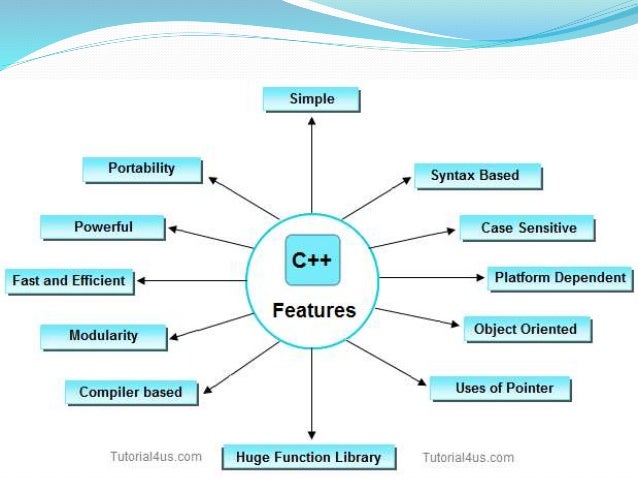For a great example of object-oriented programming in C, look at the source of POV-Ray from several years ago - version 3.1g is particularly good. 'Objects' were struct with function pointers, of course. Macros were used to provide the core methods and data for an abstract object, and derived classes were structs that began with that macro. Getting started with this article on Object-Oriented Programming In C. What Is Object-Oriented Programming? The major motivation behind the invention of the object oriented approach is to remove some of the flaws encountered in the procedural approach. In OOP data is treated as a critical element in the program development and restricts its flow around the system. C is an object-oriented programming language that intends to be a simple, modern, and general-purpose programming language for application development. The course is applicable to students who want to enter the world of object-oriented programming, using the C language.
- C++ Basics
- C++ Object Oriented
- C++ Advanced
- C++ Useful Resources
- Selected Reading
The prime purpose of C++ programming was to add object orientation to the C programming language, which is in itself one of the most powerful programming languages.
Object Oriented Programming C++ Projects
The core of the pure object-oriented programming is to create an object, in code, that has certain properties and methods. While designing C++ modules, we try to see whole world in the form of objects. For example a car is an object which has certain properties such as color, number of doors, and the like. It also has certain methods such as accelerate, brake, and so on.
There are a few principle concepts that form the foundation of object-oriented programming −
Object
This is the basic unit of object oriented programming. That is both data and function that operate on data are bundled as a unit called as object.
Class
When you define a class, you define a blueprint for an object. This doesn't actually define any data, but it does define what the class name means, that is, what an object of the class will consist of and what operations can be performed on such an object.
Abstraction
Data abstraction refers to, providing only essential information to the outside world and hiding their background details, i.e., to represent the needed information in program without presenting the details.
For example, a database system hides certain details of how data is stored and created and maintained. Similar way, C++ classes provides different methods to the outside world without giving internal detail about those methods and data.
Encapsulation
Encapsulation is placing the data and the functions that work on that data in the same place. While working with procedural languages, it is not always clear which functions work on which variables but object-oriented programming provides you framework to place the data and the relevant functions together in the same object.

Inheritance

One of the most useful aspects of object-oriented programming is code reusability. As the name suggests Inheritance is the process of forming a new class from an existing class that is from the existing class called as base class, new class is formed called as derived class.
This is a very important concept of object-oriented programming since this feature helps to reduce the code size.

Object Oriented Programming With Dev C 5
Polymorphism
The ability to use an operator or function in different ways in other words giving different meaning or functions to the operators or functions is called polymorphism. Poly refers to many. That is a single function or an operator functioning in many ways different upon the usage is called polymorphism.
Overloading
C++ Object Oriented Programming Book
The concept of overloading is also a branch of polymorphism. When the exiting operator or function is made to operate on new data type, it is said to be overloaded.